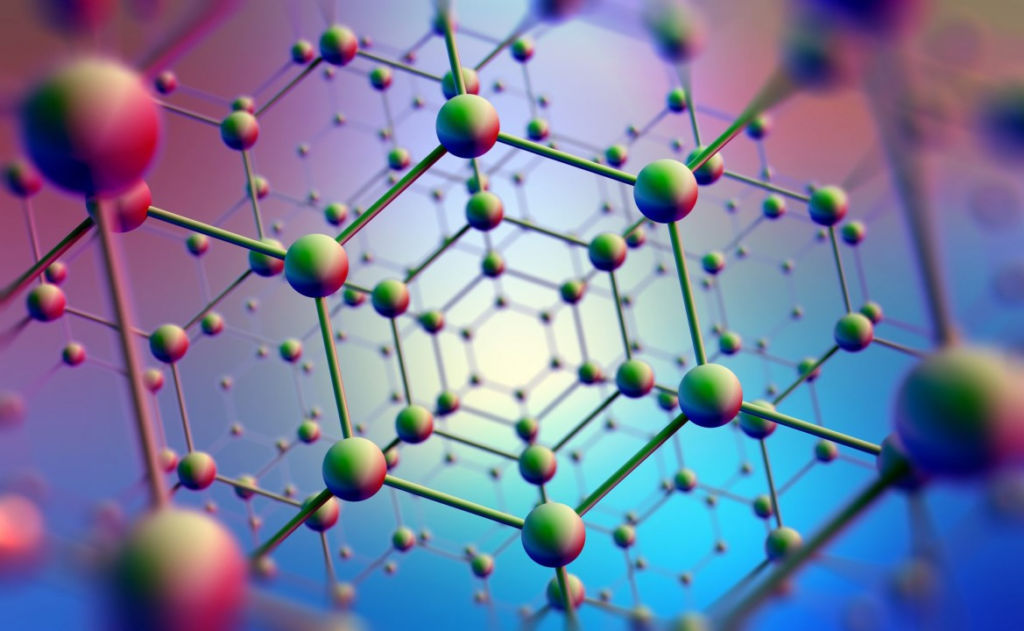Nanotechnology: Revolutionizing Science At The Molecular Level
Nanotechnology, the manipulation of matter at the atomic and molecular scale, is transforming science and technology across various industries. Operating at a scale of 1 to 100 nanometers, nanotechnology enables scientists to engineer materials and devices with remarkable properties. From medicine and electronics to environmental science and energy production, nanotechnology is driving innovation and offering solutions to some of the world’s most pressing challenges.
Understanding Nanotechnology

Nanotechnology involves designing, producing, and manipulating materials at the molecular and atomic level to create products with enhanced properties. It merges principles from physics, chemistry, biology, and engineering to develop nanoscale materials that exhibit unique mechanical, electrical, and chemical characteristics.
Key Concepts of Nanotechnology
- Nanomaterials: Materials engineered at the nanoscale that exhibit enhanced properties such as increased strength, lighter weight, and improved reactivity.
- Nanoelectronics: The application of nanotechnology in designing smaller, more powerful electronic devices.
- Nanomedicine: The use of nanotechnology for medical diagnostics, drug delivery, and tissue engineering.
- Molecular Nanotechnology (MNT): Manipulating individual molecules to create advanced molecular machines and systems.
How Nanotechnology is Transforming Industries
Nanotechnology has applications across diverse industries, revolutionizing processes and improving product performance.
Medicine and Healthcare
Nanotechnology is making groundbreaking advancements in healthcare by improving diagnostics, drug delivery, and disease treatment.
- Targeted Drug Delivery: Nanoparticles are used to deliver drugs directly to diseased cells, minimizing side effects and enhancing treatment effectiveness.
- Early Diagnosis: Nanosensors can detect diseases at their earliest stages by identifying biomarkers in bodily fluids.
- Regenerative Medicine: Nanotechnology aids in tissue engineering by creating scaffolds that promote cell growth and tissue repair.
Electronics and Computing
Nanoelectronics has revolutionized the electronics industry by enabling the development of smaller, faster, and more efficient devices.
- Smaller Chips and Processors: Nanotechnology allows the production of microchips with higher processing power and lower energy consumption.
- Flexible Electronics: Nanomaterials are used to create bendable and wearable electronic devices.
- Quantum Computing: Nanotechnology contributes to the development of quantum computers that can perform complex calculations at unprecedented speeds.
Environmental Science and Sustainability
Nanotechnology plays a critical role in addressing environmental challenges by enabling the development of sustainable solutions.
- Water Purification: Nanofilters remove contaminants and pathogens from water, providing clean and safe drinking water.
- Pollution Control: Nanomaterials capture pollutants and reduce emissions in industrial processes.
- Renewable Energy: Nanotechnology improves the efficiency of solar panels, batteries, and energy storage systems.
Food and Agriculture
Nanotechnology is revolutionizing the food and agriculture sector by enhancing food safety, improving crop yields, and reducing waste.
- Nanoencapsulation: Encapsulation of nutrients and flavors at the nanoscale ensures better absorption and prolonged shelf life.
- Smart Packaging: Nanotechnology enables packaging materials that detect spoilage and preserve freshness.
- Pest Control: Nano-based pesticides provide targeted pest management while minimizing environmental impact.
Aerospace and Defense
Nanotechnology is enhancing the performance and durability of materials used in the aerospace and defense sectors.
- Lightweight Materials: Nanomaterials such as carbon nanotubes and graphene improve the strength-to-weight ratio of aircraft and spacecraft.
- Advanced Sensors: Nanosensors detect threats and provide real-time information in defense applications.
- Heat-Resistant Coatings: Nanotechnology enhances the thermal resistance of aerospace materials, improving their lifespan.
The Role of Nanotechnology in Scientific Research

Nanotechnology is revolutionizing scientific research by enabling the development of innovative tools and techniques.
- Molecular Imaging: Nanoparticles improve the resolution of imaging techniques, allowing scientists to visualize molecular processes in real time.
- Atomic Force Microscopy (AFM): AFM provides high-resolution images of surfaces at the atomic level, enabling detailed analysis of nanoscale structures.
- Nanoscale Fabrication: Nanotechnology allows precise control over the fabrication of nanostructures, facilitating the development of new materials and devices.
Challenges and Ethical Considerations of Nanotechnology
Despite its potential, nanotechnology presents challenges and raises ethical concerns that must be addressed.
Health and Safety Concerns
- Toxicity of Nanoparticles: Some nanoparticles may pose health risks if inhaled or absorbed by the body.
- Environmental Impact: The long-term effects of nanoparticles on ecosystems and biodiversity remain uncertain.
Regulatory Frameworks
- Lack of Standardization: The absence of standardized protocols for evaluating the safety of nanomaterials poses regulatory challenges.
- Need for Oversight: Governments and regulatory bodies must establish guidelines to ensure the responsible development and use of nanotechnology.
Ethical and Social Implications
- Privacy Concerns: Nanotechnology-enabled surveillance devices raise concerns about individual privacy.
- Equitable Access: Ensuring that the benefits of nanotechnology are accessible to all communities is essential to prevent inequality.
The Future of Nanotechnology

The future of nanotechnology promises even greater advancements as researchers continue to explore its potential. Emerging trends and innovations include:
- Nanorobotics: Development of nanoscale robots that can perform complex tasks, including repairing damaged tissues.
- Self-Healing Materials: Materials that use nanotechnology to repair themselves when damaged.
- Artificial Intelligence Integration: AI-powered nanosystems that can analyze data and make real-time decisions.
Also Read : Space Technology: Revolutionizing Modern Communication And Exploration
Conclusion
Nanotechnology is revolutionizing science at the molecular level by enabling the development of innovative materials, devices, and solutions across various industries. Its applications in healthcare, electronics, environmental science, and beyond are transforming the way we approach global challenges. However, addressing the ethical, safety, and regulatory concerns associated with nanotechnology is essential to ensure its responsible and equitable use. As the field continues to evolve, nanotechnology holds the potential to shape a more sustainable and technologically advanced future.
FAQs
What is nanotechnology?
Nanotechnology is the science of manipulating materials at the atomic and molecular scale to create advanced materials and devices with unique properties.
How does nanotechnology improve healthcare?
Nanotechnology improves healthcare by enabling targeted drug delivery, early disease detection, and advancements in regenerative medicine.
What are the potential risks of nanotechnology?
Potential risks include the toxicity of nanoparticles, environmental impact, and privacy concerns related to nanoscale surveillance technologies.
How is nanotechnology used in electronics?
Nanotechnology enhances electronics by enabling the production of smaller, faster, and more efficient devices, including microchips and flexible electronics.
What is the future of nanotechnology?
The future of nanotechnology includes advancements in nanorobotics, self-healing materials, and AI-powered nanosystems that will further revolutionize various industries.
